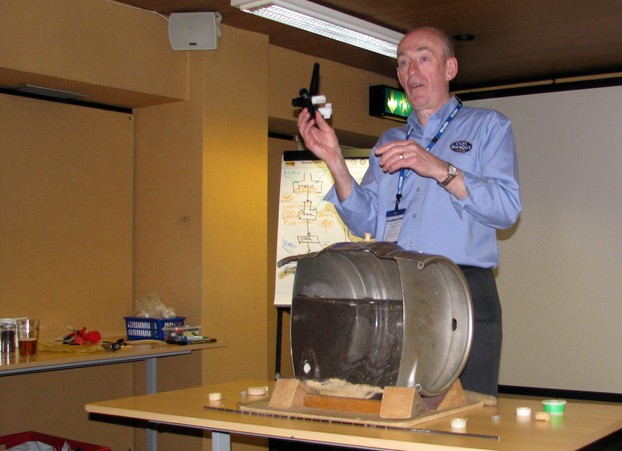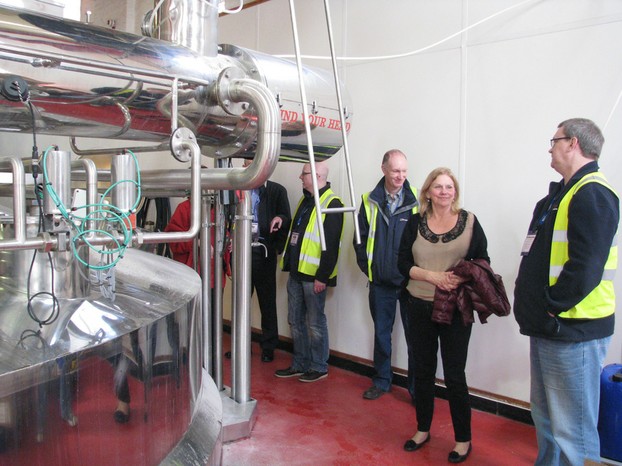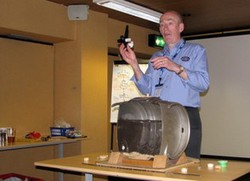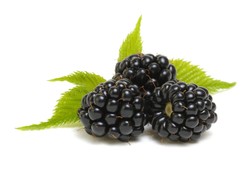Cask Marque has been accrediting real ale pubs in the UK for more than 15 years and runs a trail to encourage people to visit the approved venues.This article by Steve Rogerson explains what the Cask Marque testers look for and a personal account about what to expect on one of the organisation's Ambassador Training Days.

Cask Marque: Helping Keep Real Ale in Top Condition
A look at how the Cask Marque organisation helps ensure a good pint of beer and a personal account of a Cask Marque training day.
 Simon Best shows how to tap a cask Photo by Steve Rogerson |
While many people love a good pint of real ale, sometimes finding one can be difficult. Real ale is a live product, which still ferments in the cellar in the pub from which it is served. That means care must be taken in handling, storing and even pouring the beer if it is to end up as the sort of pint the brewer intended. Sadly, for various reasons, not all publicans give their real ales the attention they deserve.
A number of breweries run their own schemes to try to ensure quality beer in their own pubs, but one body – Cask Marque – has since 1997 been providing an independent source of verification for pubs and even breweries. Pubs that meet its strict criteria on the quality of the cask-conditioned beers they serve can have the right to display the Cask Marque certificate in their pubs. And more than 8000 pubs in the UK have been accredited and there is even interest in extending the scheme to other European countries, including Sweden, Spain and France.
Cask Marque Inspections
Each Cask Marque pub is inspected twice a year. The real ales served are checked for temperature, clarity, aroma and, of course, taste. Even the glassware is inspected for cleanliness. The visits are unannounced and those that pass are given a certificate valid for a year.
In 2012, the Cask Marque inspectors tested 53,000 samples of beer and out of the pubs inspected, only 13% failed. The most common reason for failure is serving the beer too warm, and that accounted for four-fifths of those who didn’t pass in 2012.
The perfect temperature for real ale, according to Cask Marque, is 11 to 13˚C in the cellar and plus or minus one degree from that at the tap. Beer served at above 15˚C fails. Last year, one pub was found to be serving its beer at above 30˚C; they don’t have a Cask Marque certificate. The lower temperature in the cellar is also important because if the cellar is too cold the beer won’t condition properly.
The Cask Marque Trail
To encourage real ale drinkers to appreciate the value of Cask Marque, in 2010 the organisers started the Cask Marque Trail. The certificates now carry a QR code that can be scanned from a mobile phone using a special free-to-download Cask Marque app. Those that want to take part in the Trail register and every pub scanned adds to their total.
The app uses GPS to show the person’s locality on a map and nearby Cask Marque accredited pubs. These are coloured red for ones that have already been scanned and black for those yet to be visited. And there are prizes. Scan 25 pubs, and a Cask Marque bottle opener is yours. Fifty pubs scanned brings a Cask Marque polo shirt. And for those who pass 100, the prize is attending a Cask Marque Ambassador training day at a brewery. I am one of the 145 people out of the 8500 trailers who have reached this milestone.
Ambassador Training Day
My Ambassador Training Day was held in early May 2013 at the Marston’s Brewery in Burton-on-Trent. There were half-a-dozen of us on the course and our trainer was Simon Best.
After an introduction to Cask Marque and the Trail, Simon explained the brewing process from the basic ingredients to what happens in the brewery before it is bottled or shipped out to the pubs in casks. The four main ingredients of beer are barley (though for this source of starch some countries use maize (notably the USA), rice (common in the Far East) and other grassy options), water (called liquor in the brewing process and the make-up of which can greatly influence the taste of the final product), yeast for fermentation, and hops and other flavourings.
The process of brewing real ale though does not stop when the beer reaches the cellar of the pub. Simon went through the process of what a good publican must do to allow the beer to go through a secondary fermentation and we were taken into a real cellar to see some of this in action, and even have a go ourselves.
An interesting fact thrown in for those who doubt the complexities of beer compared with, say, wine is that worldwide there are three, perhaps four, types of wine. There are 140 types of beer.
The next stage was pouring the beer. I was surprised at how much this can affect the taste. Simon poured four pints from the same pump using various techniques. Each pint tasted different. We all had a go at pouring our own.
The next stage was a lesson on how to taste the beer. The first thing to do is to look at it. Is it clear? Note some beers, such as wheat beers, are meant to be cloudy. Feel the glass. Does the temperature feel right? Smell it. Swirl the beer round in the glass to release the aromas. And finally taste it.
The taste buds on our tongues are arranged with the bitter taste buds at the back, the sour and acid ones near the back on the sides, the salty ones near the front on the sides, and the sweet ones at the front. Different people have different levels of sensitivity in all these areas, which can affect how well they can taste beers.
A less pleasant part of the lesson was tasting bad beer. Simon had prepared a collection of samples of beers with different off flavours that we tried as he explained the causes of them. Some off flavours can be there intentionally. For example, a sour taste in most British real ales would be a sign that something was wrong, but some Belgian beers encourage that sourness as part of the make-up of the beer.
The day included a guided tour around the Marston’s Brewery (pictures from which are here) and, of course, some tasting of correctly brewed, conditioned and poured beer.
 Touring Marston's Brewery in Burton-on-Trent Photo by Steve Rogerson |
You might also like
Small Towns Along the Kentucky Bourbon TrailBy Judith Glynn Sampling bourbon is the mainstay of the Kentucky Bourbon Trai...
Foragers' WinesWhile it is possible to make wines from fruits grown in your garden,foragers ...
Traditional cider makingCider has been made in Western England since time immemorial, and there is mu...






 KZine Issue 31: Review of October 2021 Issueon 11/07/2021
KZine Issue 31: Review of October 2021 Issueon 11/07/2021
 KZine Issue 30: Review of June 2021 Issueon 07/05/2021
KZine Issue 30: Review of June 2021 Issueon 07/05/2021
 KZine Issue 29: Review of February 2021 Issueon 02/23/2021
KZine Issue 29: Review of February 2021 Issueon 02/23/2021
 KZine Issue 28: Review of September 2020 Issueon 10/01/2020
KZine Issue 28: Review of September 2020 Issueon 10/01/2020




Comments
SteveRogerson, Thank you for practical information, pretty pictures and product lines.
Thank you for sharing what training day accentuates as important in quality-ranking beers. In particular, I find the taste bud sequence somewhat counterintuitive -- except perhaps for diabetics needing to know about fatty, sweet tastes -- in that I'd think bitter and sour would be foremost to warn against possibly problematic foods, sort of like Nature knowing that bright colors may signify troublesome tastes and textures.
Would there be a certain range in glass shape, size and thickness most conducive to the beer experience?